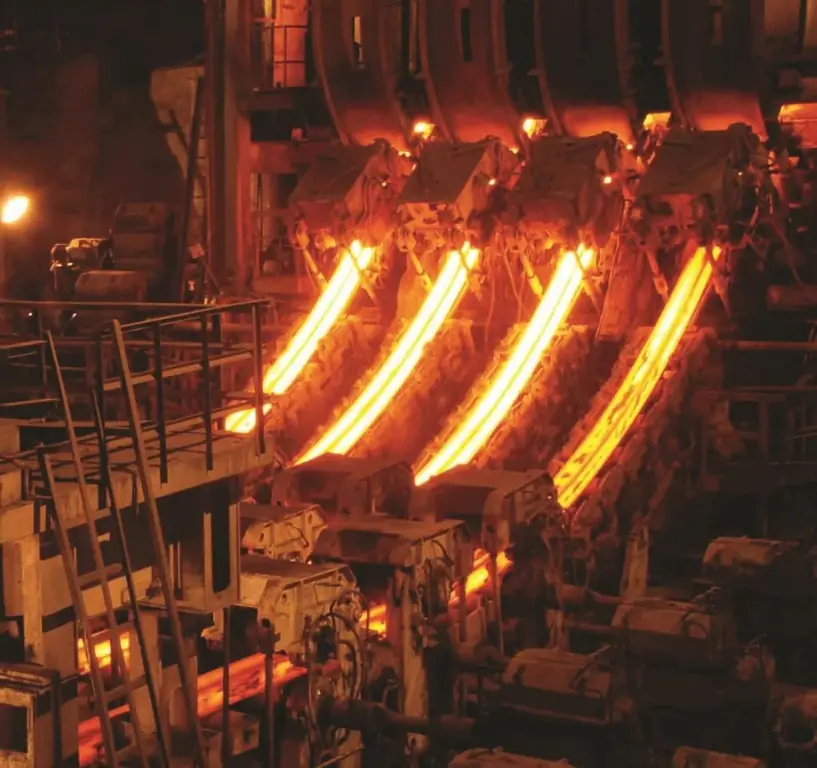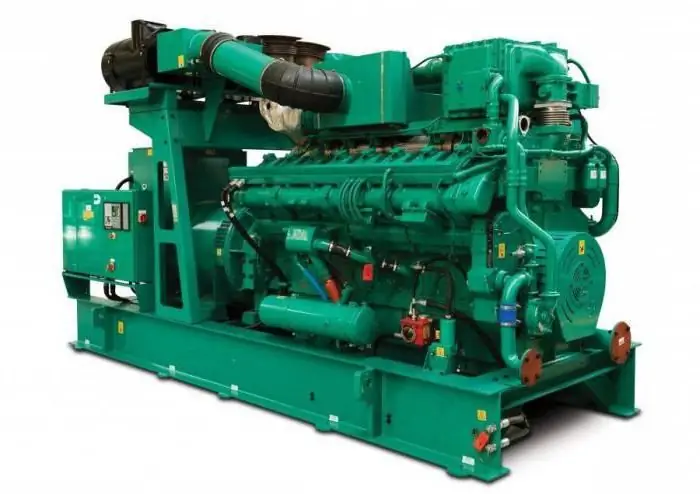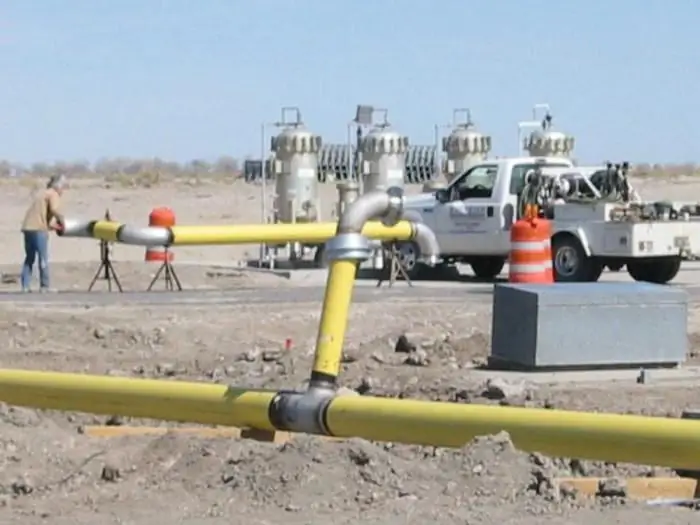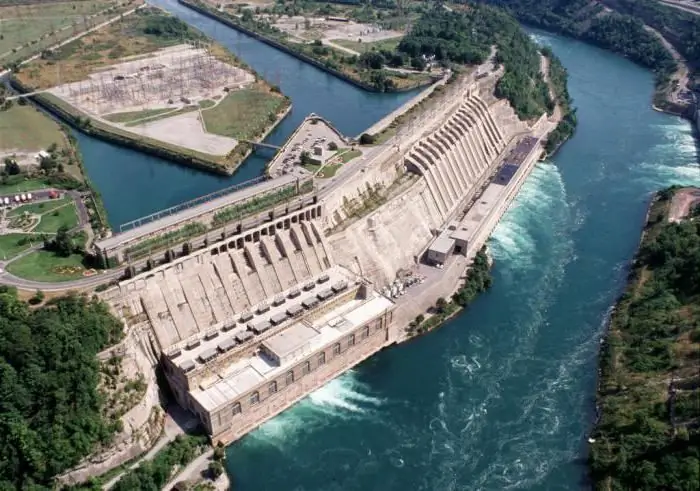2026 Author: Howard Calhoun | [email protected]. Last modified: 2025-06-01 07:12:56
Almost everyone imagines the purpose of hydroelectric power plants, but only a few truly understand the principle of operation of hydroelectric power plants. The main mystery for people is how this whole huge dam generates electrical energy without any fuel. Let's talk about that.

What is a hydropower plant?
Hydroelectric power plant is a complex complex consisting of various structures and special equipment. Hydroelectric power plants are being built on rivers, where there is a constant flow of water to fill the dam and reservoir. Similar structures (dams) created during the construction of a hydroelectric power plant are necessary to concentrate a constant flow of water, which is converted into electrical energy using special equipment for hydroelectric power plants.
Note that the choice of a place for construction plays an important role in terms of the efficiency of the HPP. Two conditions are necessary: a guaranteed perpetual supply of water and a high river slope.
HPP operation principle
The operation of a hydroelectric power plant is quite simple. Erected hydraulic structuresprovide a stable pressure of water that enters the turbine blades. The pressure sets the turbine in motion, as a result of which it rotates the generators. The latter generate electricity, which is then delivered to the consumer through high-voltage transmission lines.
The main difficulty of such a structure is to ensure a constant pressure of water, which is achieved by building a dam. Thanks to it, a large amount of water is concentrated in one place. In some cases, a natural flow of water is used, and sometimes a dam and diversion (natural flow) are used together.
In the building itself there is equipment for a hydroelectric power station, the main task of which is to convert the mechanical energy of water movement into electrical energy. This task is assigned to the generator. Additional equipment is also used to control the operation of the station, distribution devices and transformer stations.
The picture below shows a schematic diagram of the HPP.

As you can see, the flow of water rotates the turbine of the generator, which generates energy, supplies it to the transformer for conversion, after which it is transported through power lines to the supplier.
Power
There are different hydroelectric power plants, which can be divided according to the generated power:
- Very powerful - over 25 MW.
- Medium - up to 25 MW.
- Small - with generation up to 5 MW.
The power of a hydroelectric power station depends primarily on the flow of water and the efficiency of the generator itself, which is used on it. But even the mostan efficient installation will not be able to produce large amounts of electricity with a weak water pressure. It is also worth considering that the power of a hydroelectric power plant is not constant. Due to natural causes, the water level in the dam can increase or decrease. All this has an impact on the volume of electricity produced.

The role of the dam
The most complex, largest and generally the main element of any hydroelectric power station is a dam. It is impossible to understand what a hydroelectric power plant is without understanding the essence of how a dam works. They are huge bridges that hold the water flow. Depending on the design, they may differ: there are gravitational, arched and other structures, but their goal is always the same - to retain a large amount of water. It is thanks to the dam that it is possible to concentrate a stable and powerful flow of water, directing it to the blades of a turbine that rotates a generator. It, in turn, produces electrical energy.
Technology
As we already know, the principle of operation of a hydroelectric power station is based on the use of the mechanical energy of falling water, which is later converted into electrical energy with the help of a turbine and a generator. The turbines themselves can be installed either in the dam or near it. In some cases, a pipeline is used through which water below the level of the dam passes under high pressure.

There are several power indicators of any hydroelectric power station: water flow and hydrostatic head. The last indicator is determined by the height difference between the start and end points.free fall of water. When creating a station design, the entire design is based on one of these indicators.
Today's known technologies for the production of electricity make it possible to obtain high efficiency when converting mechanical energy into electrical energy. Sometimes it is several times higher than that of thermal power plants. Such high efficiency is achieved due to the equipment used at the hydroelectric power station. It is reliable and relatively easy to use. In addition, due to the lack of fuel and the release of a large amount of thermal energy, the service life of such equipment is quite long. Breakdowns are extremely rare here. It is believed that the minimum service life of generator sets and structures in general is about 50 years. Although in fact, even today, hydroelectric power stations that were built in the thirties of the last century are quite successfully functioning.

Russian hydropower plants
Today, about 100 hydroelectric power plants operate in Russia. Of course, their capacity is different, and most of them are stations with an installed capacity of up to 10 MW. There are also such stations as Pirogovskaya or Akulovskaya, which were put into operation in 1937, and their capacity is only 0.28 MW.
The largest are the Sayano-Shushenskaya and Krasnoyarsk HPPs with a capacity of 6400 and 6000 MW, respectively. Stations follow:
- Bratskaya (4500 MW).
- Ust-Ilimskaya HPP (3840).
- Bochuganskaya (2997 MW).
- Volzhskaya (2660 MW).
- Zhigulevskaya (2450 MW).
Despite the huge number of such plants, they generate only 47,700 MW, which is equal to 20% of the total volume of all energy produced in Russia.
In closing
Now you understand the principle of operation of hydroelectric power stations, which convert the mechanical energy of the flow of water into electrical energy. Despite the rather simple idea of obtaining energy, the complex of equipment and new technologies make such structures complex. However, compared to nuclear power plants, they are really primitive.
Recommended:
Thermal imaging control of electrical equipment: concept, principle of operation, types and classification of thermal imagers, features of application and verification

Thermal imaging control of electrical equipment is an effective way to identify defects in power equipment that are detected without shutting down the electrical installation. In places of poor contact, the temperature rises, which is the basis of the methodology
Continuous casting of steel: principle of operation, necessary equipment, advantages and disadvantages of the method

Today, a huge number of various things, parts, etc. are made of steel. Naturally, this requires a large amount of source material. Therefore, the plants have long been using the method of continuous casting of steel, characterized by the most important feature - high productivity
Turboprop engine: device, scheme, principle of operation. Production of turboprop engines in Russia

A turboprop engine is similar to a piston engine: both have a propeller. But in every other way they are different. Consider what this unit is, how it works, what are its pros and cons
Gas piston power plant: the principle of operation. Operation and maintenance of gas piston power plants

Gas piston power plant is used as a main or backup source of energy. The device requires access to any type of combustible gas to operate. Many GPES models can additionally generate heat for heating and cold for ventilation systems, warehouses, industrial facilities
Cathodic corrosion protection of pipelines: equipment, principle of operation

The article is devoted to the cathodic protection of pipelines from corrosion. The types of stations that implement such protection and the principle of operation of the technique are considered

